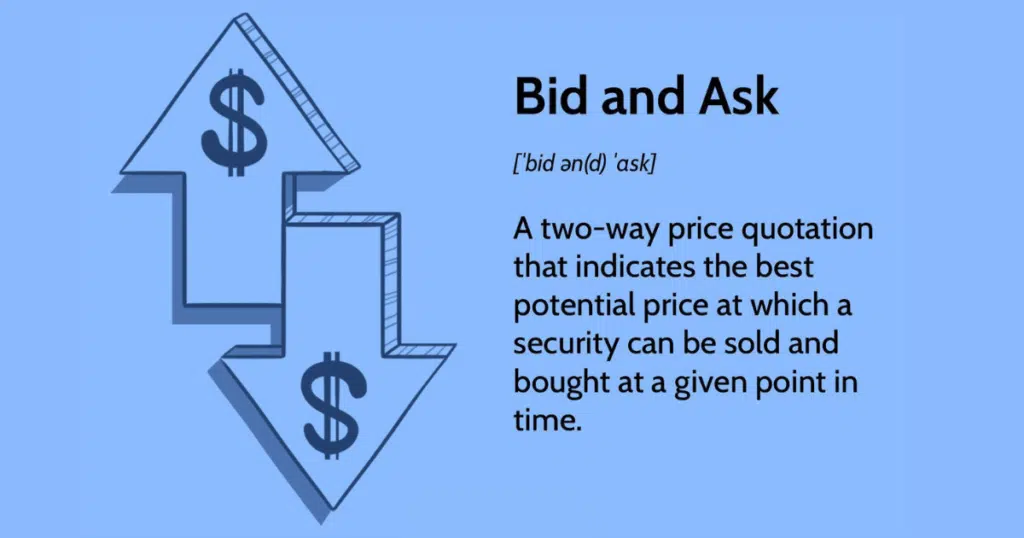Understanding Bid Price in Financial Markets
The bid price is the highest price a buyer is willing to pay for a particular product or service.
In financial marketplaces, such as those for commodities, securities, or cryptocurrencies, it represents the amount of money buyers are offering for an item.
When brokers or shareholders want to sell their assets or stock holdings, they can either select one of the existing bid prices from the order book, preferably the highest, or set an ask price and wait for buyers to place bids against it, thus fulfilling the order.

Understanding Bid-Ask Spread in Financial Markets
Traders in financial markets can choose the price at which they are willing to buy or sell an asset when placing their order.
However, if their chosen price deviates significantly from the current market price, their order may not be executed.
Typically, the bid price is lower than the asking price, also known as the “offer price,” representing the price people are willing to sell.
The difference between the bid and asking prices is known as the bid-ask spread.
Market Makers’ Profit in Financial Markets
Market makers regularly create bids for security and may also create bids when a seller seeks a suitable price.
The spread between these two prices represents their profit.
Therefore, wider spreads generate more revenue for market makers.
A bidding war occurs when multiple bidders compete for the same item by placing successive bids.
In a bidding war, buyers continue to raise their bids to outdo competing bidders, driving up the item’s price rapidly.
Cryptocurrencies are typically bought at a price lower than the ask price but never higher.
The buyer has complete control over setting the bid price unless it significantly deviates from market standards and requires a price adjustment.